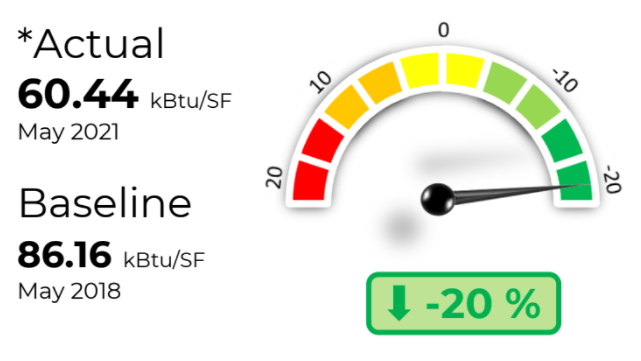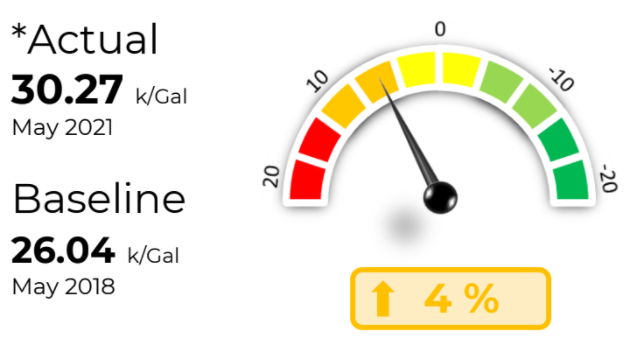Each Cedar Rapids Community School District building receives a monthly report card totaling their usage in the following areas:
- Energy (gas and electric)
- Water
- Waste
- Carbon emissions
The goal of the report card is to continually improve your school’s impact on the environment and increase your Energy Star score. The best way to improve is to encourage everyone to:
- Turn off lights when leaving the room, or during peak daylight times. Use natural lighting when possible.
- Turn off or unplug electrical items when not in use: Smart boards, chargers, laptops/desktops, lamps, etc.
- Close doors to hallways—hallways are not heated or cooled; leaving doors open means heating and cooling equipment must run longer, increasing electrical use and equipment maintenance and repairs.
- Close vestibule doors (these doors ensure that unnecessary hot or cold temperatures from the outside do not enter the building).
- Keep windows closed.
- Report any leaking or dripping faucets, toilets and showerheads.
- Increase recycling of materials (milk cartons, fruit cups, all paper products, aluminum cans, etc.).
- Avoid use of plastic straws, plastic silverware, Styrofoam, etc.
- Start a compost program for food scraps and paper towels.
- Shut off window air conditioning units nightly.
- Power off computers, monitor screens, and smart boards nightly.
- Avoid propping exterior doors open during arrival/dismissal times and after school activities.
The 2018-2019 school year will be the performance baseline year for the 2021-2022 school year report card to avoid abnormalities in usage because of shutdowns from Covid-19 and the 2020 derecho.
Waste calculations

Waste calculations consist of recycling, garbage, and compost. This report determines how much each school produces and the amount that is diverted away from the landfill. Based on each school’s dumpster sizes, number of pickups per week, an amount in terms of pounds is calculated over the course of one month.
- 13 gallon bag: roughly 12 pounds
- Four-yard dumpster (22.5 bags): 270 pounds
- Six-yard dumpster (30 bags): 360 pounds
- Eight-yard dumpster (37.5 bags): 450 pounds
Pounds of waste per month = 4(total pounds X number of waste pickups each week)
Energy Star score
The 1-100 Energy Star score compares your school’s energy consumption to similar K-12 buildings nationwide in Energy Star’s portfolio database. Buildings with a score of 75 or better (over a consecutive 12-month period) are considered high performers and are eligible for Energy Star certification and recognition. Your building’s score is calculated from Energy Star’s national database and changes monthly based on meter read entries from utility (gas, electric, and water) bills.
Energy gauge
The energy gauge reading provides a quick view to tell you if your school is consuming more or less energy than expected. The calculated percentage is based on your school’s most recent 12-month period (electrical and gas) consumption in comparison to a baseline year (2018/2019).
* The Energy Star Score takes into account your school’s building envelope (windows,doors,roof,insulation,foundation) and HVAC (Heating,Ventilation,Air Conditioning) mechanical design. Building energy efficiency improvements, equipment operating at peak performance, building hours of use, and implementing schoolwide energy conservation practices are all ways to increase your school’s Energy Star score.
* The baseline year energy consumption is weather normalized, removing the variable of weather. This means that a reduction in consumption is due to building use, operational systems, and environmentally conscious practices, not the weather.
Water gauge
The water gauge reading provides a quick view to tell you if your school is consuming more or less water than expected. The calculated percentage is based on your school’s most recent 12-month period water consumption in comparison to the baseline year (2018/2019).
Carbon dioxide emissions
CO2 emissions are measured in metric tons and are calculated based on total energy, in terms of gas and electricity consumed in the most recent 12-month period (this number currently does not include diesel fuel emission from buses or vehicles).
Carbon Dioxide is released into the atmosphere when fossil fuels — coal, natural gas, and oil — are burned. CO2 is one of the greenhouse gases that absorbs radiation and prevents heat from escaping our atmosphere. This excess heat creates disrupted weather patterns, higher global temperature averages, and other changes to our climate. Carbon emissions affect the planet significantly, as they are the greenhouse gas with the highest levels of emissions in the atmosphere.



